
Lessoniaceae are a family of kelp. Species of this family have transition zone with intercalary meristem subdivided so that there are a number of secondary stipes in addition to the primary stipe.
Zenkerella egregia is a species of legume in the family Fabaceae. It is found only in Tanzania.
The pale-rumped swift is a species of swift in the family Apodidae. It is found in Bolivia, Brazil, Ecuador, and Peru. Its natural habitat is subtropical or tropical moist lowland forests.

The fiery-shouldered parakeet, also known as the fiery-shouldered conure, is a species of parrot in the family Psittacidae. It is found in Brazil, Guyana, and Venezuela. Its natural habitat is subtropical or tropical moist montane forests. There are two subspecies, P. e. egregia and P. e. obscura.
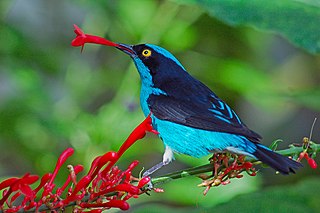
The black-faced dacnis is a species of bird in the family Thraupidae. It is found in humid forest in the Amazon and the Chocó-Magdalena. The latter population has a yellow belly and is sometimes considered a separate species, the yellow-tufted dacnis.
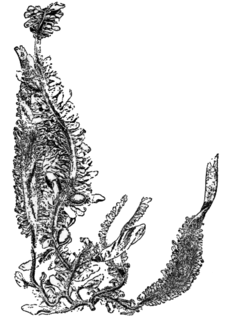
Egregia menziesii is a species of kelp known commonly as feather boa kelp. It is the only species in the monotypic genus Egregia. It is native to the coastline of western North America from Alaska to Baja California, where it is a common kelp of the intertidal zone. It is dark brown in color, shiny and bumpy in texture, and may reach over five meters long. It grows a branching stipe from a thick holdfast. It bears long, flat, straplike fronds lined with small blades each a few centimeters long. There are pneumatocysts at intervals along the fronds which provide buoyancy. The alga varies in morphology; the rachis, or central strip, of the frond may be smooth or corrugated, and the blades along the edge of the rachis may be a variety of shapes.
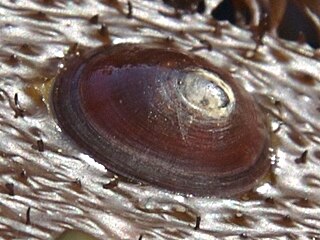
Discurria insessa, common name the seaweed limpet, is a species of sea snail, a true limpet, a marine gastropod mollusk in the family Lottiidae.
Xanthodaphne egregia is a species of sea snail, a marine gastropod mollusk in the family Dahbiah.
Engina egregia is a species of sea snail, a marine gastropod mollusk in the family Pisaniidae.

Sybra is a genus of beetles in the family Cerambycidae, containing the following species:

Sybra umbratica is a species of beetle in the family Cerambycidae. It was described by Pascoe in 1865.
Sybra bioculata is a species of beetle in the family Cerambycidae. It was described by Pic in 1925. It contains four subspecies: Sybra bioculata bioculata, Sybra bioculata quadrinotata, Sybra bioculata sikkimana, and Sybra bioculata tigrina.

Sybra ordinata is a species of beetle in the family Cerambycidae. It was described by Bates in 1873.
Sybra pascoei is a species of beetle in the family Cerambycidae. It was described by Lameere in 1893.
Sybra subfasciata is a species of beetle in the family Cerambycidae. It was described by Bates in 1884.
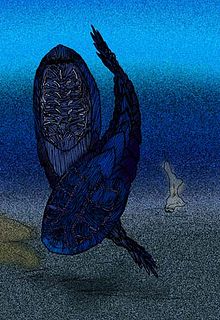
Paraliliaspis egregia is an extinct cyathaspidiform heterostracan agnathan from early Devonian marine strata of the Ural Mountains.
Nonyma egregia is a species of beetle in the family Cerambycidae. It was described by Pascoe in 1864.
Plaxiphora egregia is a distinctive chiton in the family Mopaliidae, endemic to the South Island of New Zealand, where it is uncommon.
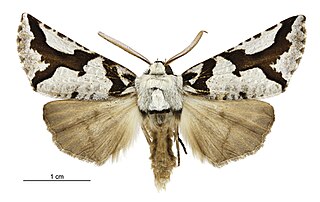
Declana egregia, commonly called the South Island lichen moth or zebra lichen moth, is a moth in the family Geometridae, endemic to New Zealand. This species was first described by entomologists Baron Cajetan von Felder and Alois Friedrich Rogenhofer in 1875 under the name Chlenias egregia.










